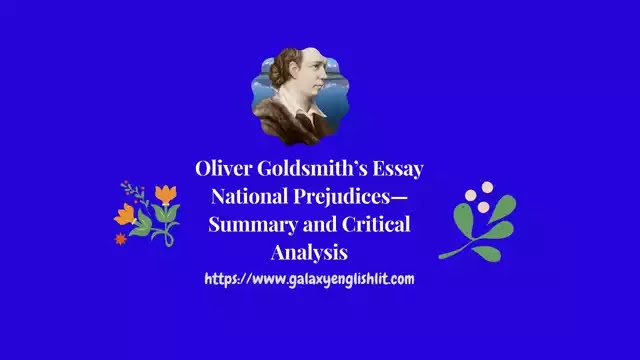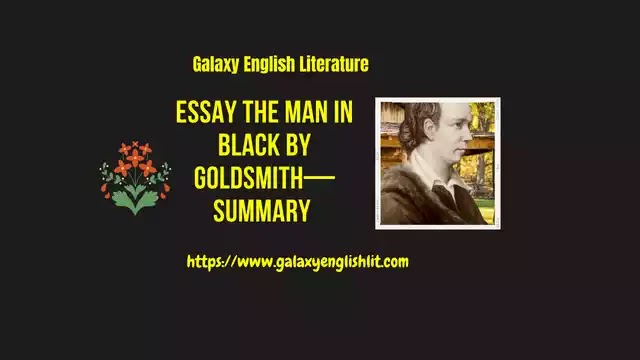Introduction to the Poem:
"True Love" is a famous sonnet of Shakespeare. Its number is 116 in the collection of his sonnets. It is addressed to Mr. W. H. It throws light on the matchless qualities of true love. In this sonnet the poet points out the immortality of true love. Shakespeare declares that true love is really the greatest power in the world. He points out the difference between true love and false love. True love has a divine power. It is spiritual. It encourages the lovers to overcome the obstacles and difficulties. It faces all the circumstances fallen in the way of true lovers. It is never changing. It stands firm. It is not the subject of time. It inspires to the confused people and brings them to the path of mortality. This sonnet is full of high imagination. It displays Shakespeare's great pictorial art. It is a perfect English sonnet.
 |
| Shakespeare's Sonnet True Love—Stanzawise Summary and Critical Appreciation |
Summary of the Poem:
Stanza 1:
Let me not …………………………to remove.
The poet tells his friend that the spiritual union of the lovers does not accept any hurdles falling in their way. No circumstances can separate them. It remains unaffected in all places, circumstances and times. True and spiritual love is not of submissive nature. If love changes in the face of adverse conditions, alters at the instigation of a person, fluctuates with the change of time, shows great wantonness and gives importance to the outward appearance and sexual pleasures, it cannot be called true love in any way. Due to having divinity in them, the true lovers are ever ready to face the orthodox society and worldly things. Because of being of sacrificing nature, they are ever ready to stake their lives for the sake of their love.
Stanza 2:
O no! ……………………………………….be taken.
According to the poet, true love cannot be removed from the hearts of true lovers. It has permanent abode in their hearts. It is firm and steady like the light house on the seashore, which shines constantly in the midst of violent storms. It cannot be swayed from its place. True love is like the pole star that illuminates the way of the confused people and the ships of men's lives in the ocean of life. True love is the guiding star of human beings and keeps them on the right path. True love inspires every one. Just as the height of the Pole-star from the earth has been measured, but its importance and deep impact on the minds of human beings, has not been calculated by now, similarly the value and impact of true love cannot be mentioned in words. In a general way, the limitless depth and force of true love can be understood.
Stanza 3:
Love’s not time’s fool……………………………..…of doom.
The poet says that true love never comes within the range of time. It does not become victim of cruel time. Time spares none. Physical parts of the body such as rosy lips and cheeks wither with the passage of time, but the feelings based on true love become stronger day by day. True love does not change with the passage of time. It is immortal. It cannot be measured in brief hours and months. It remains alive up to the doom's day.
Stanza 4:
If this be ………………………………….ever loved.
The poet claims that if it is proved that what he says false and he has not lived up to this definition of love he will gladly accept that he is not a poet, nor anyone ever loved truly in this world.
Critical appreciation of the poem:
Introduction:
The sonnet No. 116 entitled True Love is a famous sonnet of Shakespeare. It ranks among the finest products of the lyrical genius of Shakespeare. This sonnet is addressed to Mr. W. H. who is supposed to be William Herbert, Earl of Pembroke. This handsome young man who, at the instigation of the Dark Lady, feels alienated from him. The poet urges on his friend the continuance of their love despite their separation. In the present sonnet, the poet has a firm conviction and belief that true love is undying, and it remains unchanged in all circumstances, places and times. It overcomes all obstacles of class, colour, status, religion or caste. It remains unaffected of all worldly problems.
Thought-Content:
Shakespeare depicts the great qualities of true love. He has firm belief in true love. True love is the greatest power in the world. Therefore, there may not be any obstacle in the union of true minds. It is true that the path of love never runs smooth. But the divine power of love encourages lovers to overcome all difficulties. The poet points out the difference between true love and false love. True love never changes while false love changes. True love is fearless while false love surrenders with the circumstances. The poet compares true love with a light-house and then with Pole-star. True love is not the subject of Time's decay as it is far beyond the touch of time. Physical love fades away with the passage of time, but true love continues unaffected to the Day of Judgment
The Theme of the Poem:
In this sonnet, the poet points out the difference between true love and false love, He tells us that true love remains firm before the obstacles and circumstances. It is not affected by external forces. It has divinity. The true lovers find themselves near God. They face all the difficulties fearlessly. In spite of great sufferings, they never surrender before worldly powers. They are ever ready to stake their lives for the sake of their love. In poet's opinion, the true love shows the right path to the confused people. It inspires them. It guides them. True love is very far from the reach of Time. Physical charms, being skin-deep are within the range of Time and the laughing stock of Time. The ravages of Time leave their marks on rosy lips and cheeks but they cannot touch even the circumstance of selfless love.
Poet's Grand Imagination:
The poet imagines that the true love is like a light-house on the sea-shore, which shines constantly in the midst of violent storms:
"O no! it is an ever-fixed mark
That looks on tempests and is never shaken."
He further imagines that true love is like the pole-star which always rises in the North, remains in the constant position, and guides the ships and sailors misled in the unchartered sea in the thick darkness of the night:
"It is the star to every wandering bark.”
The Use of Allusions and References:
In the concern of Time, the poet derives an allusion from Greek mythology. In Greek mythology, Time is represented as an old man carrying a bent sickle in his hand with which he cuts everything that comes in his way. In another allusion, he points out that true love remains alive up to the Day of Judgment. On the Day of Judgment, all the corpses rise from their sound sleep from their graves and stand before God to get reward and punishment for their good or bad deeds. He has also taken references from King Lear, Li241:
"Love is not love
When it is mingled with regards that stands
Aloof from the entire point."
Style and Language:
It is a perfect English sonnet. It has three quatrains of four lines and a rhyming couplet. Its rhyming scheme is ab ab, cd cd, ef ef, gg. The poem is composed of five-foot iambic pentameter. The poet has used figurative language. He personifies Love, Time and ever fixed mark. He uses metaphor:
"It is an ever fixed-mark."
"It is the star to every wandering bark."
The poet uses symbolism. For instance wandering bark is a symbol of misled, confused people. Rosy lips and cheek represent physical beauty. The poem is marked with its simplicity of words, rhythmic movement of lines and lyrical flow of feelings.





